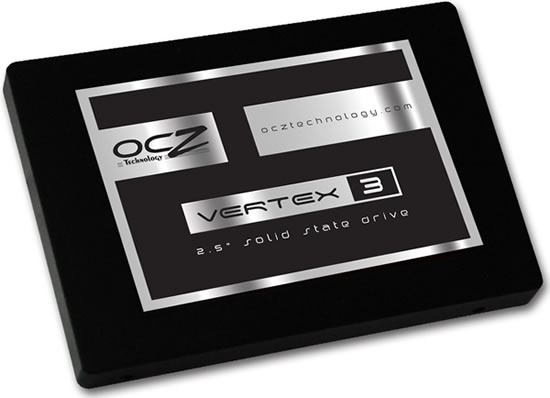OCZ has introduced its next generation of Vertex solid-state drives armed with SandForce's latest drive controllers. OCZ offers two versions of the drive, one aimed at client environments and the other intended for enterprise applications, with both using different controllers. The Vertex 3 features the SF-2200 processor while the Vertex 3 Pro uses the SF-2500.
Both controllers offer the same basic specs: up to 500MB/s sequential reads and writes, support for SATA 6Gb/s, up to 60k IOPS sustained 4KB reads and 20/60k IOPS burst/sustained 4KB writes. However, SF-2200 has an artificial firmware limitation that caps the random write throughput at 20k IOPS as SandForce believes this is sufficient for client use.

The SF-2500 also adds various enterprise-centric features such as power protection by employing a supercapacitor, enhanced SMART attributes for better diagnostics, and overall better reliability. If you're interested, Tom's Hardware has published a comprehensive review of the Vertex 3 and Vertex 3 Pro with a full break down on SandForce's new controllers.
OCZ plans to show the new Vertex series during next week's CeBIT conference in Hanover, Germany. Units should begin shipping shortly thereafter with the Vertex 3 being available in 120GB ($249.99) and 240GB ($499.99) capacities, while the Vertex 3 Pro will come in 100GB, 200GB and 400GB sizes. We haven't seen pricing for the enterprise models.
https://www.techspot.com/news/42553-ocz-intros-vertex-3-ssds-with-new-sandforce-controllers.html